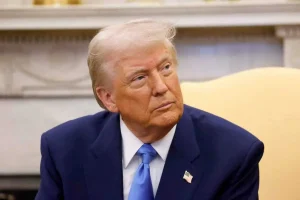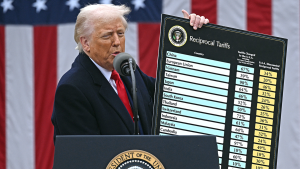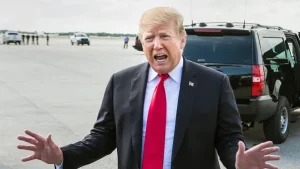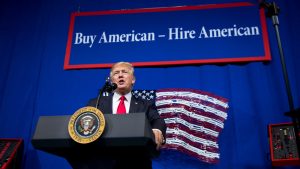Trade Alert: 70% Indian Exports Face Tariff Heat, Diversification Key
India’s export sector is once again under the spotlight as 70 percent of its goods exports to the United States remain exposed to the risk of tariffs under policies shaped by President Donald Trump. The observation comes from a study conducted by the Indian Council for Research on International Economic Relations (ICRIER), which has urged the government to adopt a strategy of negotiation coupled with trade diversification. For exporters and workers dependent on US-bound shipments, this revelation stirs anxiety about livelihoods and stability.
How Tariffs Affect People on the Ground
While tariffs may sound like a technical matter of trade policy, their impact is deeply human. From small textile units in Tiruppur to large pharmaceutical hubs in Hyderabad, millions of jobs are linked to export orders. A 10 to 15 percent tariff on key goods could mean buyers shifting to cheaper alternatives in other countries. For factory workers, artisans and small business owners, this translates into reduced orders and uncertain incomes. Many exporters recall the turbulence of 2018 and 2019 when the US removed India from its Generalized System of Preferences, leading to the loss of duty-free access for billions of dollars’ worth of products.
The Scale of Exposure
According to ICRIER’s findings, over 70 percent of India’s exports to the US could face tariff-related disruptions. These include sectors such as textiles, leather goods, chemicals, machinery and certain categories of processed food. Pharmaceuticals, while a major export, are partly shielded due to their strategic importance to US healthcare. Yet the fact that such a large share of exports is at risk highlights the urgency for India to act.
ICRIER’s Prescription: Negotiation and Diversification
The think tank has suggested two key solutions. The first is negotiation. Trade diplomacy can play a vital role in convincing the US to carve out exemptions for India or to roll back certain tariffs. Given India’s position as a strategic partner in the Indo-Pacific, ICRIER believes there is room to leverage political goodwill for economic gain. The second is diversification. Over-reliance on the US market leaves India vulnerable to sudden policy changes. By exploring opportunities in Europe, Southeast Asia, Africa and Latin America, India can reduce its dependence and create new avenues for growth.

The Human Side of Trade Diversification
Diversification is not merely about numbers and markets. It is also about people and communities. For instance, if apparel exporters find steady buyers in African markets, it secures jobs for women workers in Tamil Nadu. If engineering goods gain traction in Latin America, it strengthens opportunities for small manufacturers in Gujarat. Trade diversification spreads risk, but it also spreads prosperity. It allows India’s workforce to adapt and thrive without being tied to the uncertainty of a single market.
Learning from Past Lessons
The 2018-19 tariff crisis under Trump’s administration was a wake-up call for Indian exporters. Many businesses had to absorb losses, cut jobs or reduce wages to stay competitive. While some exporters pivoted successfully to other regions, others struggled to survive. ICRIER’s latest warning brings back those memories and highlights the need for long-term resilience. This time, policymakers are being urged to anticipate risks rather than respond after damage has already been done.

A Call for Proactive Action
Experts believe that India must move quickly. Negotiations with the US should be pursued alongside strengthening trade agreements with other partners. At the same time, investments in logistics, ports and digital trade facilitation are necessary to make Indian goods more competitive globally. For workers and entrepreneurs, what matters is certainty and security. They want assurance that policies will shield them from sudden shocks.
Conclusion
India’s exposure of 70 percent of its goods exports to Trump-era tariffs is more than a statistic. It is a stark reminder of how vulnerable livelihoods can be to global politics. ICRIER’s call for negotiation and trade diversification is not only about protecting numbers on a balance sheet but also about safeguarding the hopes of millions of families. In the face of tariff uncertainty, India has a choice: to remain reactive or to build a resilient and diversified trade strategy. For exporters, workers and communities, the latter offers a path of stability and growth.

Also read: https://channel6network.com/south-korea-condemns-pahalgam-terror-attack/

